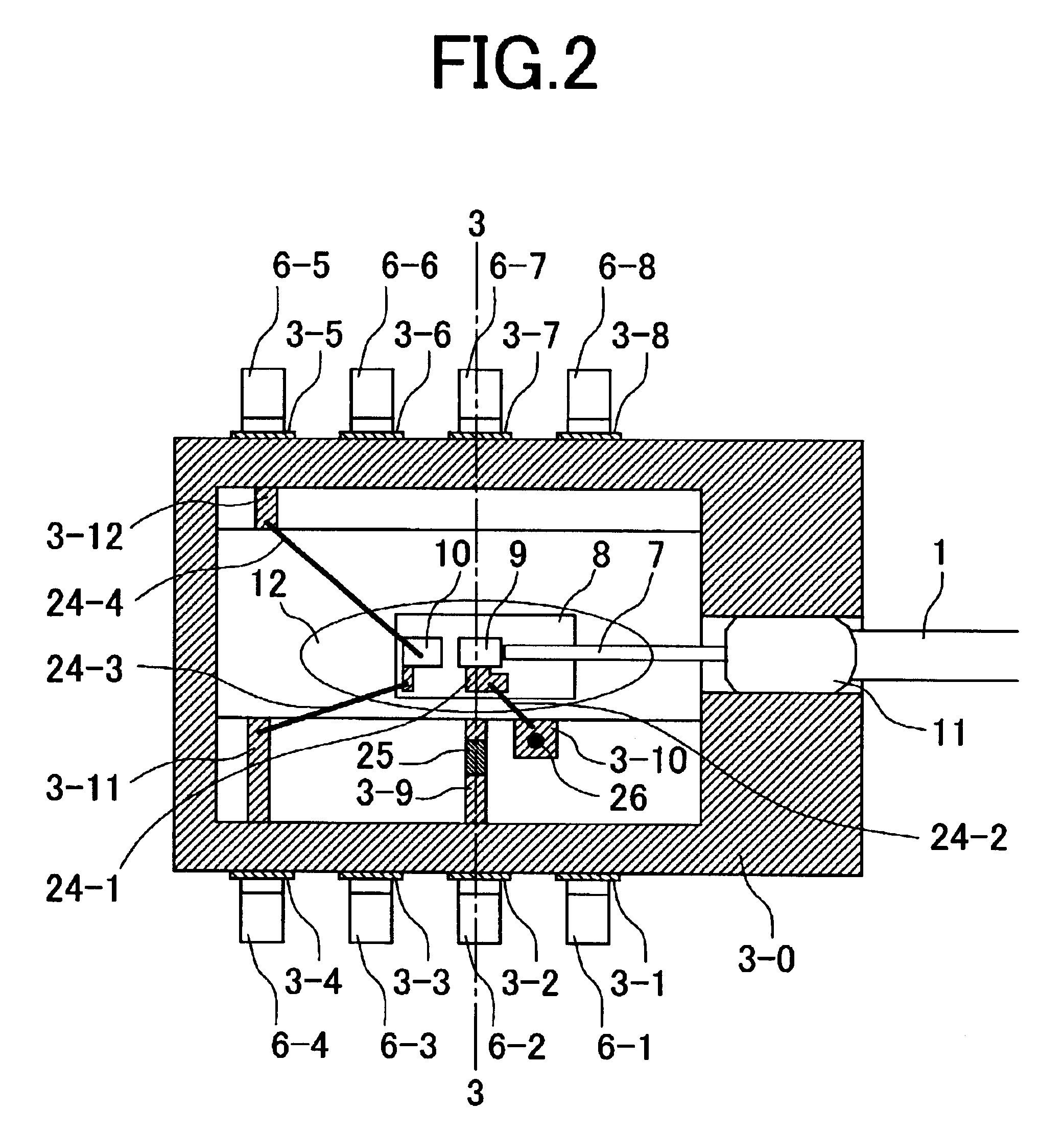Optical module and optical communication system
a technology of optical communication system and optical module, which is applied in the field of optical modules, can solve the problems of large optical loss, high cost of welding method, and high thermal resistance of optical parts and adhesives, and achieve the effects of low cost, low cost, and reliable supply of conductivity
- Summary
- Abstract
- Description
- Claims
- Application Information
AI Technical Summary
Benefits of technology
Problems solved by technology
Method used
Image
Examples
first embodiment
A first embodiment concerns an optical module having an LD element and a PD element that monitors output of the LD element.
FIG. 1 is a perspective view of a LD module with a fiber pigtail according to the first embodiment of the present invention. In order to describe the inside of the LD module, and a method for bonding a cap, a cap 5 is shifted to a position above the LD module for the sake of illustration. Here, a part of details on an internal electrode pattern, a wire bond, and the like, are omitted. FIG. 2 is a plan view illustrating a state before the cap of the LD module shown in FIG. 1 is mounted. In FIG. 2, the electrode patterns, the wire bonds, and the like, inside the module are also illustrated in detail. FIG. 3 is a cross section of the LD module taking along line 3--3 in FIG. 2. A main body of the ceramic package is formed of three ceramic lamination layers. FIGS. 4 to 7 illustrate respective electrode patterns of three ceramic plate layers, which constitute the main...
second embodiment
A second embodiment is an optical module having a PD element and an IC element which amplifies output of the PD element.
FIG. 8 is a perspective view of a PD module with a fiber pigtail according to the second embodiment of the present invention. In order to describe the inside of the PD module, and a method for bonding a cap, the cap 5 is shifted to a position above the PD module for the sake of illustration. Here, a part of details on an electrode pattern, wire bonds, and the like, inside the package are omitted. FIG. 9 is a plan view of the PD module in FIG. 8, illustrating a state before the cap of the PD module is mounted. In FIG. 9, the electrode pattern, the wire bonds, and the like, inside the package are also illustrated in detail. FIG. 10 is a cross section of the PD module taken along line 10--10. in FIG. 9. FIGS. 11 to 14 illustrate respective electrode patterns of three ceramic plate layers, which constitute a ceramic package main body 4 of the PD module. FIG. 11 illustr...
third embodiment
A third embodiment is an optical module having the following: a LD element; a PD element that monitors output of the LD element; and an optical connector. Therefore, unlike the first and second embodiments, the present embodiment additionally includes an optical connector mechanism.
FIG. 15 is a perspective view of a LD module with an optical connector according to the third embodiment of the present invention. In order to describe the inside of the module, and a method for bonding a cap 5, the cap 5 and a connector fixing bracket 74 are shifted to a position above the module for the sake of illustration. Here, although this module has the same function as that of the LD module of the first embodiment, it has, for example, the following differences:
(1) An optical output interface is an optical connector, and has a connector mechanism.
(2) Leads are taken out from the bottom of a package.
In order to realize an optical connector mechanism, a ferrule 71 having a short bare fiber 7 is fix...
PUM
 Login to View More
Login to View More Abstract
Description
Claims
Application Information
 Login to View More
Login to View More - R&D
- Intellectual Property
- Life Sciences
- Materials
- Tech Scout
- Unparalleled Data Quality
- Higher Quality Content
- 60% Fewer Hallucinations
Browse by: Latest US Patents, China's latest patents, Technical Efficacy Thesaurus, Application Domain, Technology Topic, Popular Technical Reports.
© 2025 PatSnap. All rights reserved.Legal|Privacy policy|Modern Slavery Act Transparency Statement|Sitemap|About US| Contact US: help@patsnap.com



